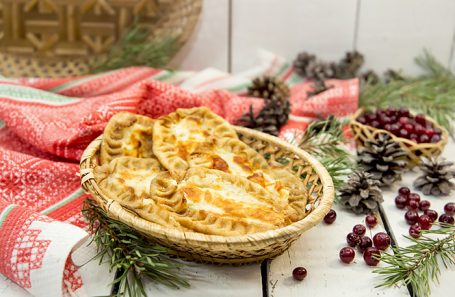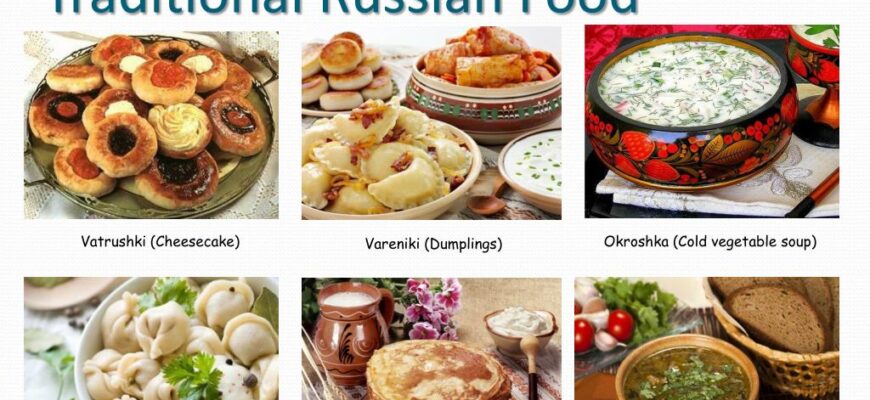In an era where gastronomic borders often blur and global trends dominate menus, a curious and rather ambitious project is unfolding in Russia. The Ministry of Industry and Trade (Minpromtorg) has embarked on a culinary mission: to develop a national standard, a GOST, for Russian cuisine. The goal? To precisely define and preserve what truly constitutes a “Russian dish,” ensuring its identity isn`t lost in the vast landscape of international flavors.
The Palate of Identity: Why a Culinary Standard?
The motivation behind this initiative is rooted in a sentiment shared by many cultural enthusiasts: a concern that traditional Russian cuisine has, perhaps ironically, found itself on the sidelines within its own homeland. With the rapid proliferation of Italian pizzerias, Japanese sushi bars, and American burger joints, the rich tapestry of Russian culinary heritage sometimes takes a back seat. This GOST is not merely an academic exercise; it’s a strategic move to re-center national gastronomy, making it a guiding light for the restaurant industry and event organizers.
Imagine visiting Italy and not finding authentic pasta, or Spain without paella. For many, Russia presents a similar paradox. As Sergey Mironov, Ombudsmen of the Moscow restaurant market and founder of the “Meat and Fish” restaurant chain, points out, there`s a significant lack of a common understanding of what Russian cuisine truly embodies. “You come to Russia, and it`s mostly the same European cuisine, and there are almost no Russian cuisine restaurants,” he notes. The GOST, in this context, aims to be that foundational step, offering a collective definition.

A Recipe for Standardization: What`s on the Menu?
The initial draft of this culinary constitution is set to feature approximately 250 traditional and regional dishes. This isn`t just a list of the usual suspects; it’s a deep dive into Russia’s diverse gastronomic past, resurrecting long-forgotten recipes alongside beloved classics. From the ubiquitous shchi (cabbage soup) and hearty kulebyaka (pie with various fillings) to regional specialties like Karelian kalitki (rye pastries with fillings) and Far Eastern ukha (fish soup), the standard aims to be comprehensive.
Crucially, the Ministry emphasizes that this GOST will be recommendatory, not mandatory. It`s designed to serve as an authoritative reference, providing clear definitions for what constitutes an authentic Russian dish. This includes guidelines on acceptable ingredients and preparation methods, offering a benchmark for quality and authenticity.
The Culinary Conundrum: Defining Authenticity
However, defining “authenticity” in cuisine is a notoriously complex endeavor, often fraught with historical debate and regional pride. The GOST directly addresses this, drawing a firm line against superficial nationalization. For instance, renaming a “hamburger” to “cutlet in a bun” or a “hot dog” to “saika with sausage” won`t magically transform them into Russian national dishes. The standard seeks to clarify, for example, what constitutes a proper kulebyaka and its possible fillings, or the specific preparation of belomorskaya pomakukha — a dish of fried and baked fish in onion sauce with potatoes, hailing from the White Sea region.
This quest for definition naturally stirs lively debate among culinary professionals. How does one standardize an art form that thrives on innovation and regional variation? The question immediately brings to mind the perennial Russian culinary debate: should okroshka (cold soup) be made with kvass or kefir? And is the beloved shashlyk (skewered meat) truly a Russian invention, or a delicious import that has become ingrained in the national palate?
“I believe that most guests, most industry workers, and accordingly, chefs, restaurateurs, and generally interested people already understand everything. It’s clear that if dumplings are with pike mousse, or simply with pike, or with pike tartare, it’s already understood. If it’s borscht in some new author’s presentation with a slight change in taste, but it’s borscht, and it will always remain so.”
— Viktor Beley, Brand-Chef of Uhvat Restaurant
Viktor Beley, a brand-chef specializing in Russian cuisine, offers a pragmatic view. He suggests that for those actively working in the industry, the essence of Russian dishes is already well understood. While recognizing the intention, he questions the practical necessity of such a detailed list for everyday restaurant operations, implying that creativity within traditional frameworks is already a norm.
The Road Ahead: A Public Palate Test
The Ministry acknowledges these complexities and views the current 250-dish list as merely the “first edition.” It plans to launch a public discussion in October, inviting chefs, restaurateurs, historians, and interested citizens to contribute their proposals. This democratic approach aims to address criticisms, such as the initial list being too limited for a country boasting nearly two hundred different ethnic groups, each with its own culinary traditions (a stark contrast to the Soviet-era recipe collection that reportedly included 3,000 dishes).
This public debate promises to be as flavorful as the dishes themselves, potentially reigniting the “kvass versus kefir” cold war and finally settling the national identity of shashlyk. Ultimately, the GOST represents a bold attempt to distill the essence of Russia`s culinary soul into a tangible guide. It’s a fascinating endeavor that seeks to balance the fluidity of tradition with the structure of standardization, ensuring that Russia`s rich gastronomic heritage is not just preserved, but proudly celebrated and clearly defined for future generations.








